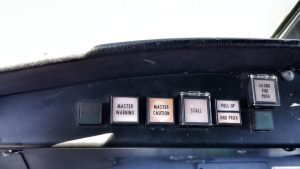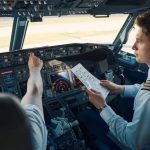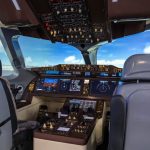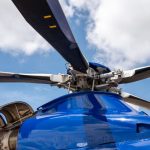Enhancing Crew Resource Management with AI
Crew resource management (CRM) involves effectively utilizing all available resources for flight crew personnel to ensure safe and efficient operations, minimizing errors, reducing stress, and enhancing efficiency. Notably, this definition does not specify that all crew members must be human.
The integration of AI into traditional aviation crews can be a complex topic when considering CRM’s role in safety. While CRM focuses more on cognitive and interpersonal skills rather than technical expertise for aircraft operation, the question arises whether AI should be part of flight safety measures.
In many aviation incidents, the root cause is often attributed to the crew’s failure to respond adequately to the situation, leading to wrong decisions or a chain of errors. Can AI disrupt this accident chain? Perhaps not directly, but if AI technologies can prevent these errors proactively, then their inclusion becomes beneficial.
AI’s role in aviation safety is promising, but the key lies in ensuring sufficient human oversight in developing aviation-specific AI applications. Efforts are underway to address this, with EASA releasing a new concept paper emphasizing human involvement in overseeing AI advancements.
The EASA paper outlines fundamental concepts crucial for integrating AI technologies in aviation, distinguishing between Level 1 and Level 2 AI applications. Level 1 enhances human capabilities, while Level 2 introduces human-AI collaboration, enabling AI systems to make decisions under human supervision.
Critical Skills and Strategies for Effective CRM
No matter the makeup of the crew in the cockpit, CRM is a critical tool in the safety of a flight.
- Communication: Clear, concise, and assertive communication is paramount. Crewmembers must be able to share information, express concerns, and provide feedback openly.
- Workload Management: Proper distribution and management of tasks among crewmembers prevent overload and reduce the risk of errors. Efficient workload management ensures that critical tasks are prioritized and completed within the required timeframe. AI can help with this.
- Decision-Making and Problem-Solving Skills: Crewmembers (and AI) must possess the ability to analyze situations, consider all available information, and make informed decisions quickly, including designing contingency plans for unexpected events.
- Error Detection and Correction: Recognizing and promptly correcting errors can significantly mitigate risks. A culture that encourages reporting and learning from mistakes is crucial.
- Situational Awareness: Maintaining an accurate understanding of the aircraft’s environment, systems, and the current and future flight status is essential for anticipating and responding to potential issues.
CRM fosters trust and respect among the crew and their tools (including AI and other technology tools), leading to better collaboration and coordination. This positive environment enhances team efficiency, as crewmembers work cohesively towards common goals, effectively manage their tasks, and support each other in dynamic and sometimes high-stress situations.
The evolving landscape of AI in aviation presents groundbreaking opportunities, particularly in enhancing safety measures. Balancing technological advancements with the proven principles of crew resource management will be crucial. If AI can be programmed to foster teamwork in new technologies, the trajectory of progress in aviation safety will continue positively. The future will reveal the extent to which humans and machines can collaborate effectively for sustained safety improvements.










